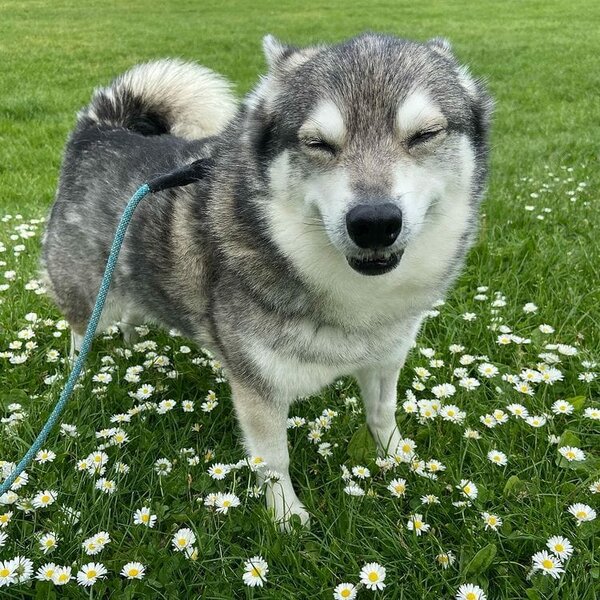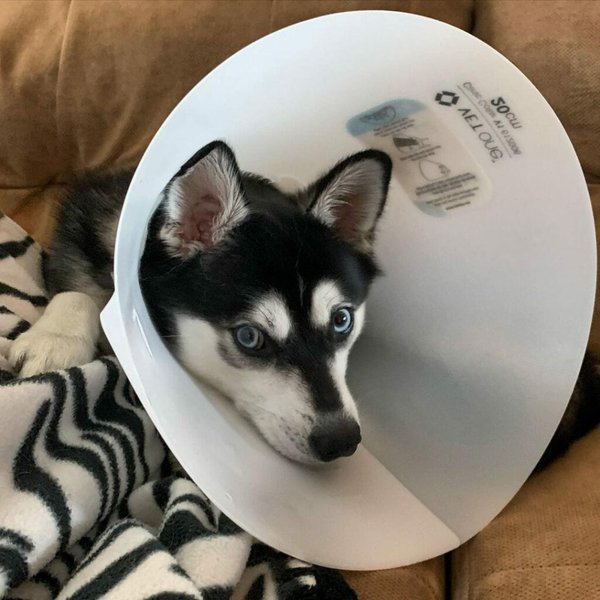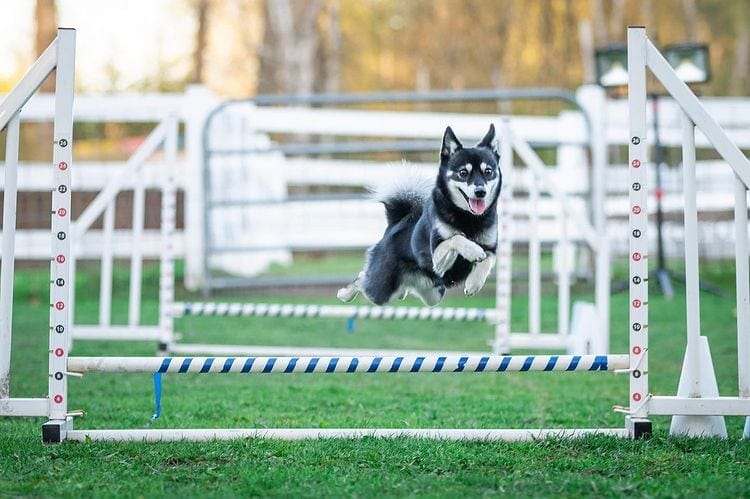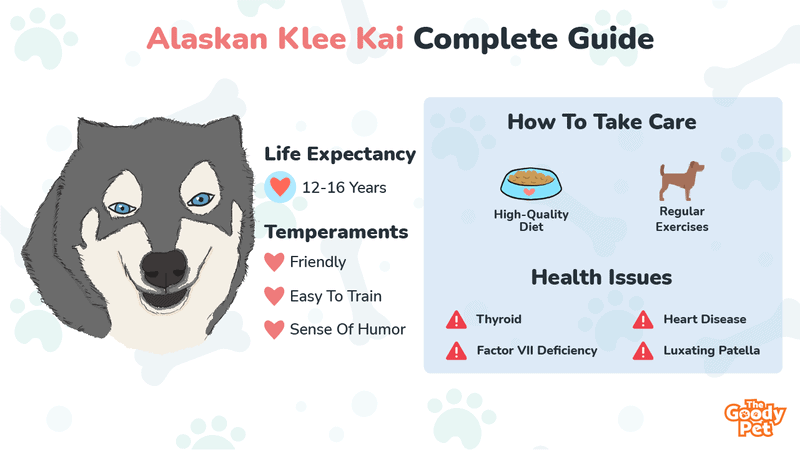Have you ever noticed how the black mask on the Alaskan Klee Kai (AKK) makes the breed look as if they are ready for a Money Heist? But looks can be deceiving since these dogs are calm and friendly. It is no wonder they make some of the best pets for dog enthusiasts.
The Alaskan Klee Kai were first bred in Alaska by a woman named Linda Spurlin and her family. This AKK dog breed is bred from a mixture of Alaskan Husky, Siberian Husky, American Eskimo, and Belgian Schipperke to make a sizable canine. It also comes in three sizes: the toy, the miniature, and the standard.
If you are looking for a family pet that is small, affectionate, and loyal, the Alaskan Klee Kai is a good option for you. But as you take the furry friend home, let’s look at breed details to help you give utmost care and be prepared to handle your new family member.
How Big Do Alaskan Klee Kai Get?

The Alaskan Klee Kai’s physical appearance ranges from small to medium, and they come in three different sizes.
Size
The smallest one, the toy, can grow up to 13 inches. That is about three times the size of a puppy Chihuahua. The AKK also comes in a miniature size, which goes up to 15 inches. That is about five times the size of a puppy Chihuahua.
The standard size can go up to 17 inches, which is eight times the size of a puppy Chihuahua. However, the Alaskan Klee Kai ranks as a small canine when compared to dog breeds, similar to the AKK, like the Siberian Husky that can grow up to 24 inches.
Weight
How much does an Alaskan Klee Kai weigh? Mature Alaskan Klee Kai can weigh from 5 lbs to 22 lbs, depending on the breed’s size. But most of these miniature dogs range between 10 lbs to 15 lbs. It is important to monitor your puppy’s weight to help you detect any signs of serious illness.
Coat Colors And Patterns
Alaskan Klee Kai come in different shades, but all have a black mask that extends below the eyes. The color variations in these dogs make them beautiful and good looking. Some common colors you can find on these canines include:
- Red and white
- Gray and white
- Black and white
- Tan
- Yellow
- Sable
- Brown
How Long Do Alaskan Klee Kais Live?

The lifespan of an Alaskan Klee Kai is said to be between 12 to 16 years. This is similar to the lifespan of Alaskan Huskies, Siberian Huskies, American Eskimos, and Belgian Schipperke mixes, which are the parent breeds of the AKK.
This canine is considered to be a healthy breed. But just like any other dog breed, there are some common health issues to monitor for maximum lifespan.
Thyroid
Alaskan Klee Kais are prone to autoimmune disorders; the body’s immune system attacks the thyroid glands, creating inflammation and scar tissues. If this condition is not treated, it could lead to your four-legged furry friends having a reduced amount of thyroid hormones.
Heart Disease
Alaskan Klee Kai can get congenital heart murmurs, which could eventually lead to heart disease. A qualified breeder can screen the adult canine before breeding to ensure they are not prone to the disease.
Factor VII Deficiency
Factor VII is a clotting factor, and when it is deficient in dogs, it leads to excessive bleeding after minor knocks and scrapes. Since the condition is a recessive gene, the breeder needs to test the parent dogs to ensure they do not have the condition.
Luxating Patella
The condition is linked to canines getting wobbly or unstable kneecaps. It is a common disease with many small breeds, like the AKK. If your furry friend has this condition, ensure that it gets ample rest and some pain medication. But in extreme cases, you will have to take your canine buddy for reconstructive surgery.
How To Take Care Of Your Alaskan Klee Kai?
Your Alaskan Klee Kai will require constant exercise, quality food, and water for its general health and wellbeing. Here’s more to that:
Set Aside At Least 2 Hours Of Exercise Daily
When you buy an Alaskan Klee Kai, be ready to have a routine exercise; otherwise, the dog might end up getting exposed to opportunistic diseases. Have an exercise schedule to ensure that your canine buddy gets a great workout each day.
Provide A High-Quality Diet
The Alaskan Klee Kai is a picky eater and has a sensitive stomach. And even if you serve their favorite meal, they will only eat a small portion. It’s because the breed is a spitz-type dog whose stomach cannot handle a lot of food. You need to keep an eye on the type of food they enjoy.
For this purpose, we recommend Pet Plate and its freshly-prepared meals made from 100% human-grade ingredients. Try out its Barkin’ Recipe that is guaranteed to satisfy your Alaskan Klee Kai’s taste buds and appetite.
Get your furry friend a balanced diet with quality food and water. Ensure your dog gets all the nutrients and vitamins that they need. You can do this by investing in multivitamins, dental water additives for healthy teeth and gums.
Give Sizable Food
The AKK feeding routine and amount depends on their age. From 8 to 12 weeks, these pups will consume four bowls of food every day. From the age of 12 weeks to 24 weeks, you should feed your canine with three meals in a day. From 24 weeks to one year, feed your pooch one or two bowls of food every day.
After the first year, feed your canines with only one bowl of quality food in a day. However, some AKK might prefer getting two smaller bowls. It is your responsibility as the dog owner to ensure that you feed your canine the right amount to avoid risks of obesity issues.
Temperaments of Alaskan Klee Kai
Alaskan Klee Kais are brilliant, active but not hyper, and good dogs. These dogs are quick learners and teaching them tricks is not going to be difficult.
They will also make excellent watchdogs because they are suspicious of strangers. Here are other personality and temperament traits to expect from these four-legged friends.
Friendly
If your household has children and you are looking for an affectionate dog breed that is good with kids, the kid-friendly Alaskan Klee Kai is a great and popular choice. Since the AKK is small, it will be able to live in an apartment building without issues.
However, given its active lifestyle, it is recommended that you get a house with a small yard for your AKK to roam about.
In addition, the AKK is a great dog breed if your household has cats because it can get along with most cats, especially when they have been. However, this dog is also a great hunter, and naturally, they will hunt small animals, like birds and reptiles.

Easy To Train
Klee Kais are intelligent dogs and quick learners. There’s no hard time training your Klee Kai. However, they need an educated trainer who is firm and consistent during training. With the right training, your pooch can be off leash and still behave well outdoors.
Loyalty
The AKK is loyal and overprotective of the owner. They will follow their owners but get reserved around strangers and when faced with unfamiliar situations. That’s why most Klee Kai can be left alone, but not all the time. When your Klee Kais are lonely, they feel neglected and start being nosey and destructive.
Sense Of Humor
The Alaskan Klee Kais are known to have a good sense of humor. These dogs make goofy entertainers with adults and children. They even play tricks on their owners.
How Bad Do Alaskan Klee Kais Shed? Grooming Tips For Alaskan Klee Kais
The Alaskan Klee Kais are not hypoallergenic because they are average shedders and experience blow out during fall and winter seasons.
This breed has a double coat that protects them from getting cold, i.e., the soft and dense undercoat and the topcoat with long and hard hair that sheds continuously.
Although AKK dogs groom themselves and rarely develop a bad smell, your dog will need regular care. Let’s learn more about grooming your Klee Kai canine.
Bathing And Brushing
Bathe the doggie every four months or when they get dirty. Take your time when bathing the dog to ensure that both the top and undercoat are properly cleaned. Use a Pro Pet Works All Natural 5 In 1 Oatmeal Shampoo for healthy and safe cleaning. After that, dry the dog thoroughly to get rid of the soap on the coat.
You need to brush your AKK with a Furminator Undercoat Tool once a week. That will help to eliminate any visible dirt and make sure that their coat does not mat. Bathing and brushing your furry companion too often will lead to their skin drying out.
Shedding And Shaving
The Alaskan Klee Kai sheds twice a year. When they shed all their undercoats, you need to do in-depth grooming. That encourages the shedding of the old undercoat so the new one can grow easily.
Most people with canines shave their pets during the summertime to avoid overheating. However, if you have an AKK, don’t shave the dog, even during the hot season. Shaving will result in the coat growing back differently, and that will ruin its effectiveness.
Nail Trimming
When you notice that your furry companion’s nails have started clicking on the floor, don’t assume. It is time to trim them. That way, they will not damage your upholstery.
Related Questions
How Much Does An Alaskan Klee Kai Cost? The Alaskan Klee Kai is a rare breed that, on average, costs between $1,500 and $3,000. However, find a recognized breeder that meets recommended standards before buying, and have several tests done to assure good health. Keep in mind that prices vary based on puppy specifications and breeder reputation.
Do Alaskan Klee Kais Like To Swim? Yes, Alaskan Klee Kais like to swim and are great swimmers. It’s because they are intelligent and easy to train when you leverage the right approaches. The AKK can even get in the water without drowning, but don’t take the canine swimming without any training, because you’ll end up regretting it.
What Is The Difference Between A Pomsky And A Klee Kai? Pomskies and Klee Kais are genuinely affectionate and loyal dogs with several differences. For instance, Klee Kais are highly playful and require a lot more social interaction than Pomskies. When chasing prey, the Klee Kais have a high impulse to chase compared to Pomskies. But in terms of color variety and fluffiness, Pomskies win the day.





